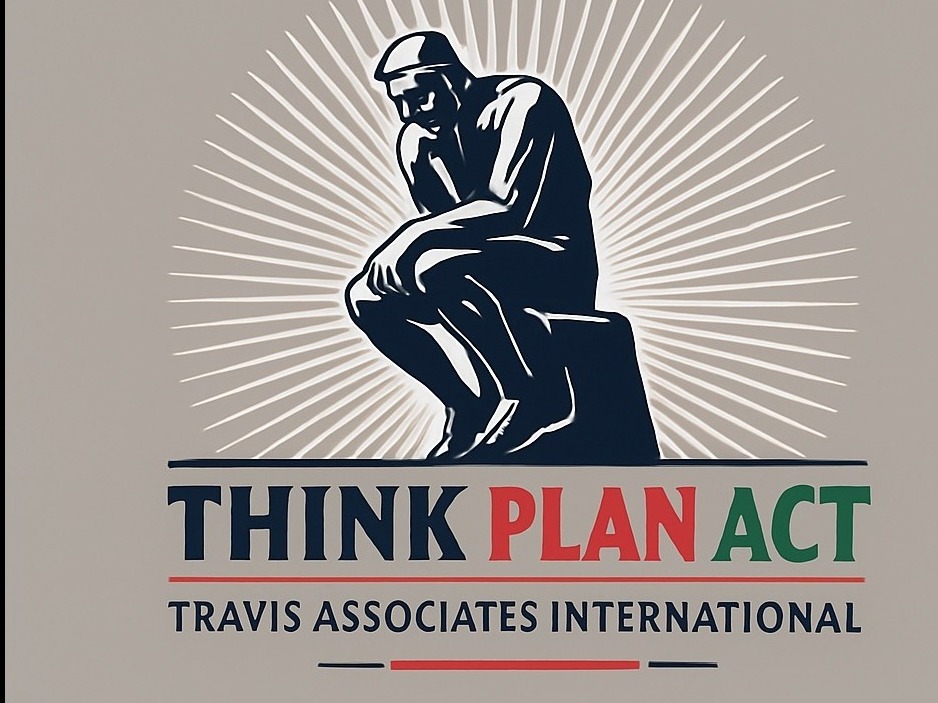Did you know that video marketing drives over 80% of all internet traffic today? In an era where attention spans are shrinking and competition is fierce, brands that harness the power of engaging video content on social media and beyond are seeing explosive growth. This article dives deep into the strategies, secrets, and actionable steps every brand must know to win with video marketing now. Ready to transform your digital marketing strategy? Read on!
The Explosive Rise of Video Marketing: Why Now Is the Time to Invest
The internet landscape has changed dramatically, and video marketing is leading the charge. According to recent statistics, videos account for more than four-fifths of all consumer online traffic. This seismic shift is driven by today’s consumer preference for visually engaging, easily digestible content. Whether you’re launching a new product or nurturing loyalty, incorporating striking video content into your marketing strategy is no longer optional—it’s essential for survival in digital marketing.
As social media platforms and their algorithms increasingly favor video, brands are experiencing unprecedented opportunities to expand their reach and foster genuine brand awareness. Video view rates outperform static content by a mile, and the shareability of visual media supercharges word-of-mouth like never before. Platforms like YouTube, Instagram Reels, TikTok, and Facebook Video have created entire ecosystems based on short form video, catering to users’ appetite for instant information and immersive stories.

- Did you know that video marketing drives more than 80% of all internet traffic? Let’s unpack the role of video marketing for today’s brands, revealing eye-opening facts and statistics that underscore its transformative power.
Why Video Marketing Matters: Transforming Modern Marketing Strategies
Modern marketing strategies are being redefined by video marketing because nothing else engages, educates, and persuades like dynamic video content. Brands see higher audience retention and deeper emotional connections when they adopt a holistic video marketing strategy. Whether you’re aiming to ramp up brand awareness, boost conversions, or foster lasting customer loyalty, integrating video into your marketing campaign can deliver dramatic improvements in ROI and audience satisfaction.
One of the key drivers behind this evolution is the integration of social video into all phases of the customer journey. From explainer videos that clarify complex products or services, to customer testimonial videos that build trust, the diverse types of video available offer unmatched flexibility and impact. Companies leveraging video marketing enjoy stronger performance in nearly every metric, whether it’s click-through-rates on video ads or increased engagement rates on social media.
The Science Behind Video Marketing: Engaging Audiences Through Social Media and Social Video
“Video content isn’t just popular—it’s essential. Consumers are 64% more likely to buy a product after watching a video about it.”
Science backs up what marketers see every day— videos activate more senses and maintain attention in ways that static images or text cannot. Social media algorithms reward brands for engaging audiences through social video , making it critical to produce eye-catching, relevant, and emotionally resonant content. Short form video formats, including viral video challenges and Instagram stories, capitalize on our brain’s preference for absorbing visual information quickly and effortlessly.
The act of watching a well-crafted video stimulates memory retention, creating a strong association between the viewer and the brand. Whether it’s a humorous viral video or a heartfelt customer testimonial, social video creates a lasting impact —resulting in more shares, higher view counts, and ultimately more conversions. Meeting your target audience where they spend their time—on platforms like TikTok, YouTube, and Facebook Video—accelerates your marketing goal achievement.

How Video Content Supercharges Your Video Marketing Strategy
When it comes to building a powerful video marketing strategy , the quality and diversity of your video content are crucial. Different types of video, such as explainer video, testimonial videos, and high-impact video ads, each offer unique benefits in moving prospects through your sales funnel. A single well-placed video ad can generate thousands of impressions, while customer testimonial videos add credibility and authenticity to your claims.
| Type of Video | Average Engagement Rate |
|---|---|
| Explainer Video | 72% |
| Testimonial Videos | 68% |
| Video Ads | 65% |
| Social Video | 80% |
These engagement rates demonstrate why video content is so effective at holding attention and driving action. Viral video formats often blend entertainment, storytelling, and education to maximize shares and reach. Leveraging user-generated content and integrating influencer collaborations further amplify the impact of your video marketing campaign. No matter your industry, tailoring your content marketing to match your audience’s behaviors and preferences is a proven path to success.
- The Psychological Impact of Video; The Emotional Connection Created by Viral Video and Customer Testimonial Videos

Building a Winning Video Marketing Strategy: Essential Steps
Creating an effective video marketing strategy takes more than just recording a viral video and hoping for the best. It’s a systematic process that begins with understanding your audience and ends with careful performance evaluation using analytics tools. Step-by-step planning, aligned content creation, and ongoing optimization are central to success. The right balance of explainer videos, video ads, and social video generates both immediate engagement and long-term brand growth.
A strong video marketing campaign integrates content marketing and analytics tools at every stage: from initial audience research and creative brainstorming, to production, distribution, and post-campaign analysis. Consider how each type of video can support your overarching marketing goal, whether it’s boosting traffic, increasing conversions, or elevating brand awareness in competitive social media environments.
Identifying Your Target Audience for Maximum Video Marketing Impact
Understanding your target audience is the cornerstone of any successful video marketing campaign. Analytics tools—like Google Analytics, Facebook Insights, or YouTube Analytics—make it easier than ever to discover who’s engaging with your content and which topics resonate. Defining demographics, behaviors, and pain points allows brands to refine their creative direction and deliver timely, relevant, and impactful videos.
Align your creative vision with your marketing campaign objectives to maximize impact. Instead of guessing what your audience wants, use analytics tools to identify trending topics and preferred video formats. Develop a content marketing calendar to keep your campaign on track, ensuring that every video serves a specific purpose. This approach not only improves consistency but also provides actionable data for ongoing optimization.
- Define your target audience using analytics tools
- Align creative direction with marketing campaign objectives
- Build your content marketing calendar
Integrating Social Media and Social Video into Your Marketing Campaign
Mastering social media marketing is essential for amplifying your video content. Each social platform —from YouTube and TikTok to Facebook and LinkedIn—has its own unique algorithm and audience preferences. A strategic approach involves selecting optimal formats (such as short form video, explainer videos, or customer testimonial videos) and maintaining a publishing cadence that maximizes reach and engagement.
Integrating social video into your marketing campaign helps position your brand as a leader and keeps you on the cutting edge of digital marketing. From product launches to brand awareness campaigns, platforms like Instagram Reels provide fertile ground for creative storytelling. Tailoring each video ad to fit the unique environment and audience of its platform is key to achieving viral video success—driving more views, shares, and real business results.
| Platform | Optimal Video Format | Post Frequency |
|---|---|---|
| Reels (Short form video) & Stories | 3–5 per week | |
| Native Uploads & Video Ads | 2–4 per week | |
| YouTube | Shorts, Explainer Videos, Testimonial Videos | 1–3 per week |
| TikTok | Viral Video & Challenges | Daily |
| Explainer Videos & Company Updates | 1–2 per week |
Developing Compelling Video Content: From Ideation to Video Production
The heart of a successful video marketing strategy is video production that tells a story, educates viewers, and prompts action. Begin your process with brainstorming sessions, drawing inspiration from competitor research, current trends, and your target audience’s preferences. Create detailed storyboards to visualize your message and draft compelling scripts that communicate your brand’s voice and marketing goal effectively.
Focus on producing a variety of content: explainer videos that simplify complex information, testimonial videos from satisfied customers, short form video ads, and viral video challenges. By sharing educational and entertaining content, brands turn passive viewers into active brand advocates—fueling community growth and sparking new conversations around their products and services. Continuously refine your creative direction based on analytics tools data to ensure your videos hit the mark.
- Top types of video for brand impact: Explainer Videos, Video Ads, Testimonial Videos, Viral Video, Social Video

The Role of Analytics Tools in Refining Video Marketing Campaigns
“What gets measured gets improved. Analytics tools reveal which social videos are driving real ROI in your marketing strategy.”
Using analytics tools is vital for optimizing your video marketing strategy. Metrics such as watch time, viewer retention, and click-through rates provide invaluable insights into what’s working—and what needs improvement. An effective marketing campaign leverages these analytics to make data-driven adjustments, pivoting content calendars and creative approaches when needed.
Beyond vanity metrics like views, modern analytics tools allow you to drill down into demographic segmentation, conversion tracking, and customer journey mapping. This empowers you to tailor your types of video to specific stages in the buying process for maximum effectiveness. Continually iterating based on analytics helps transform a one-off viral video hit into a sustainable strategy for long-term brand awareness and growth.
Optimizing Video Content for Every Platform: Social Media and Beyond
With every social platform placing unique demands on content, optimizing your video marketing for each channel is crucial. Short form video rules TikTok and Instagram Reels, while longer explainer videos thrive on YouTube and LinkedIn. Understanding preferred video lengths, aspect ratios, and content styles per platform makes a measurable difference in performance and audience engagement.
Your video marketing strategy should include a thorough breakdown of which content types excel where—for instance, viral videos and fast-paced edits on TikTok, versus educational explainer videos and in-depth testimonial videos on YouTube. Consistently reviewing and updating your video assets ensures compatibility and maximizes the impact of every video view on your marketing campaign.
Choosing the Right Formats: Short Form Video, Explainer Video, and Video Ads
Selecting the optimal type of video for each channel is both an art and a science. Short form video, such as Instagram Reels or TikTok videos, is best for grabbing quick attention and driving viral engagement. Explainer videos are powerful on platforms like YouTube and LinkedIn, explaining your product or service with clarity and authority. Video ads, on the other hand, deliver targeted messaging and strong calls-to-action on Facebook and Instagram.
- A breakdown of content: Instagram Reels, Facebook Video, YouTube Shorts, TikTok Videos, and LinkedIn Explainer Videos

“There’s no one-size-fits-all in video content. Each platform rewards different types and lengths of video.”
Investing the time to match your video content with both the platform and target audience increases brand awareness and conversion rate. Monitor trending formats across platforms like YouTube, Facebook, and TikTok, and experiment with new types of video as algorithms and user preferences evolve. Always be prepared to iterate and improve, following best practices in content marketing and digital marketing strategy.
SEO Best Practices for Video Marketing and Social Video Visibility
Optimizing your video marketing assets for search engine visibility is essential for reaching broader audiences and winning new fans. Effective SEO tactics include crafting attention-grabbing titles, leveraging targeted tags and keywords, and writing detailed, keyword-rich video descriptions. Use closed captions and structured metadata to improve accessibility and boost performance on platforms like YouTube and in organic search engine results.
- Optimize video titles with primary keywords and platform-specific formats
- Incorporate relevant hashtags and descriptive tags for discoverability
- Write compelling, keyword-rich descriptions summarizing video content and calls-to-action

Creating High-Impact Video Marketing Campaigns: From Strategy to Execution
To launch a successful video marketing campaign , you need more than just great ideas. Start with rock-solid planning: set clear objectives (brand awareness, sales, retention), write conversion-focused scripts, then move on to high-quality video production. From there, carefully distribute content across appropriate channels, keeping a keen eye on KPIs through powerful analytics tools.
Campaigns that consistently succeed follow this systematic process while remaining nimble—ready to adjust based on real-time data from social platforms. Foster creativity, encourage feedback from your team, and celebrate wins along the way. This is how your next marketing campaign transforms from average to extraordinary.
- Essential steps for campaign planning: Goal setting, scripting, video production, distribution, and analytics review
Launching Effective Video Marketing Campaigns for Brand Growth
Successful video marketing campaigns don’t happen by accident—they are the outcome of strategic planning, creative storytelling, and rigorous performance measurement. Start your campaign by clarifying your primary marketing goal, then align your messaging and visuals accordingly. Develop scripts that resonate with your target audience and leverage video production techniques that maximize engagement.
After launch, monitor key analytics to track efficacy. Make necessary adjustments, shift distribution strategies if campaign engagement lags, and keep A/B testing elements like thumbnail images, calls-to-action, or video ad length. The goal is to minimize wasted ad spend and continuously increase ROI, letting data shape your decision-making every step of the way.
Turning Social Video into Revenue: Case Studies & Success Stories
Turning social video into tangible revenue is very much possible with the right approach. Many brands have achieved staggering growth in brand awareness and sales through timely, relevant, and highly shareable video content. Let’s compare before-and-after snapshots from campaigns that nailed the viral video formula, using creative video production, compelling storytelling, and well-implemented analytics tools to surpass their marketing goal.
| Campaign | Pre-Video Reach | Post-Video Reach | Result |
|---|---|---|---|
| Brand A (Explainer Video) | 5,000 monthly visits | 30,000 monthly visits | 6x website traffic |
| Brand B (Viral Challenge) | 1,200 social shares | 18,000 social shares | 15x more engagement |
| Brand C (Testimonial Videos) | 125 monthly leads | 600 monthly leads | Nearly 5x new customers |
How to Make Your Video Content Go Viral
Every marketer dreams of creating the next viral video , and there’s real science behind shareability. Highly shareable videos are emotionally charged, visually distinctive, and easy to relate to. They often tap into user-generated content, leveraging the reach of micro-influencers and enthusiastic communities. Remember: it’s not just luck; there’s a strategy for encouraging viewers to spread your message organically.
- Principles behind shareable video content, harnessing user-generated content, influencer collaborations

Maximizing Your Video Marketing ROI: Advanced Tactics and Analytics
Measuring the return on investment (ROI) from your video marketing strategy is fundamental to justify ad spend and improve future campaigns. This requires a smart blend of advanced analytics tools and a deep understanding of which metrics matter most. Tune your focus to view-through rates, click-through rates, cost per engagement, and conversion rates—these provide actionable insight into true campaign performance.
As you assess which types of video are generating the greatest business results, refine your future marketing strategy. Consider producing more of what works—be it explainer videos, video ads, or social video challenges—and test new ideas regularly. Sophisticated analytics tools can segment performance by audience, platform, or creative type, letting you continually optimize for profitability and scale.
Measuring Video Ad Performance: Key KPIs and Analytics Tools
- View-Through Rate: Percentage of viewers who watched your video through to the end.
- Click-Through Rate: Measures how many viewers clicked on your call to action.
- Cost Per Engagement: How much you pay for each viewer interaction—including likes, shares, or comments.
- Conversion Rate: Percentage of viewers who completed your intended marketing goal (signed up, purchased, etc.).
Continuous Improvement: Using Analytics Tools for Video Marketing Strategy Refinement
“Your first video is just the start—the best brands adjust, optimize, and innovate with every campaign.”
Continuously reviewing analytics ensures that you capitalize on every learning opportunity. Advanced analytics tools allow marketers to pinpoint where audiences drop off, which social platforms deliver the highest ROI, and what forms of video content inspire the most engagement. Use this knowledge to refine future video production and marketing strategies, achieving sustained improvements over time.

Expert Insights: Brands Leading the Way in Video Marketing Strategy
The most successful brands in digital marketing have made video the cornerstone of their overall content marketing strategy . These pioneers employ a mix of video ads, explainer videos, and viral campaigns to accelerate market penetration, capture attention, and turn viewers into devoted customers. Their consistent execution, willingness to innovate, and relentless measurement set them apart as category leaders.
By spotlighting real-world tactics—like breakthrough storytelling, strategic influencer partnerships, and cutting-edge analytics tool adoption—these brands build formidable loyalty while crushing their competition in every social media feed. The takeaways from their journey offer proven frameworks and fresh inspiration for your own marketing goal list.
Case Study Deep Dive: Exceptional Social Video and Epic Video Marketing Campaigns
- Spotlight on brands: Tactics that cemented their leadership in video marketing and content marketing
Key Takeaways from Successful Video Marketing Strategies
- Set clear, measurable objectives for every campaign
- Target your audience with highly relevant, platform-optimized content
- Embrace analytics tools for ongoing improvement
- Experiment with formats and ideas: explainer video, video ads, testimonial videos, and social video series
- Iterate campaigns based on real-world results and emerging trends
Frequently Asked Questions About Video Marketing
What is video marketing?
- Video marketing is a strategic use of video content across various platforms to promote, engage, and convert audiences. Brands employ a variety of video types—explainer, testimonial, viral, and more—often as part of a broader marketing strategy to maximize impact and ROI in digital marketing.
How much does a 30 second marketing video cost?
- A 30 second marketing video can cost from $500 to over $10,000, depending on the complexity, desired production value, and resources required. Factors like script development, professional actors, animation, post-production, and the choice of distribution channels can greatly impact the final budget for your video marketing campaign.
What is the 3-3-3 rule in marketing?
- The 3-3-3 rule means capturing your viewer’s attention in the first three seconds, delivering your core message within 30 seconds, and ensuring that key information stays memorable for at least three days. Apply this principle to create highly effective, captivating video content that drives results.
How to get started with video marketing?
- Begin by pinpointing your objectives and understanding your target audience. Next, pick the best social media channels for distribution, produce engaging and visually appealing video content, and use analytics tools from day one to measure and optimize your marketing strategy for success.

Your Roadmap for Video Marketing Success: Next Steps for Your Brand
- Clarify your video marketing objectives and KPIs
- Map your target audience using analytics tools
- Design a diversified content marketing calendar
- Produce explainer video, customer testimonial, and viral video content
- Optimize for each social media channel
- Continuously review analytics and refine your approach
Let’s have a chat, call 908-641-9211
- Start your custom video marketing consultation today and discover the secrets to exponential brand growth through professional video production, social video, and analytics-driven marketing strategies.
What You'll Gain from Mastering Video Marketing
- A proven process for engaging your target audience through stunning social video
- Tools to track, refine, and supercharge each video marketing campaign
- Insider tips for maximizing social media reach and ROI
- Inspiration from viral video case studies and marketing strategy leaders

Supporting Resources: Video Content, Marketing Strategy Templates, and Analytics Tools
- Downloadable content calendars for campaign planning
- Customizable video marketing campaign checklists
- Platform-specific video ad templates for streamlined production
Top Trends and the Future of Video Marketing
- The ongoing rise of short form video content
- Immersive AR and augmented reality experiences
- Deeper integration of AI-powered analytics in every new marketing campaign

People Also Ask
What is video marketing?
- Video marketing is the strategic use of video content across various platforms to promote, engage, and convert audiences, often as part of a broader marketing strategy.
How much does a 30 second marketing video cost?
- A 30 second marketing video can cost anywhere from $500 to over $10,000 depending on complexity, production value, and the use of actors or animation. Cost drivers include pre-production planning, scripting, video production, and editing.
What is the 3-3-3 rule in marketing?
- The 3-3-3 rule suggests capturing attention in the first 3 seconds, conveying your message within 30 seconds, and ensuring the key point is remembered for at least 3 days.
How to get started with video marketing?
- Begin by identifying your objectives, understanding your target audience, selecting optimal social media channels, and creating engaging video content. Analytics tools should be used from the outset to measure and optimize success.
- Short video examples of high-impact video marketing strategy, top viral video campaigns, and effective social video content.
- Step-by-step tutorial video on planning, producing, and launching a successful video marketing campaign integrating analytics tools and content marketing best practices.
- A documentary-style video showing live video production, from scripting and storyboarding to editing and optimizing video ads for social media.
Conclusion
Start building your video marketing strategy today—define your goals, understand your audience, create compelling content, and use analytics tools to track and optimize every campaign for lasting success.
To deepen your understanding of video marketing and its impact, consider exploring the following resources:
- “Video Marketing: Definition and Best Practices” ( activecampaign.com )
This article provides a comprehensive overview of video marketing, including its definition, benefits, and best practices. It discusses how video content can increase engagement, improve brand awareness, and boost conversion rates.
- “Video Marketing Strategy: Harness the Power of Video” ( mailchimp.com )
This resource offers insights into developing an effective video marketing strategy. It includes examples of successful campaigns and discusses the importance of creating content tailored to different platforms and audiences.
If you’re serious about leveraging video marketing to enhance your brand’s reach and engagement, these resources will provide valuable insights and actionable strategies.
 Add Row
Add Row  Add
Add 




Write A Comment